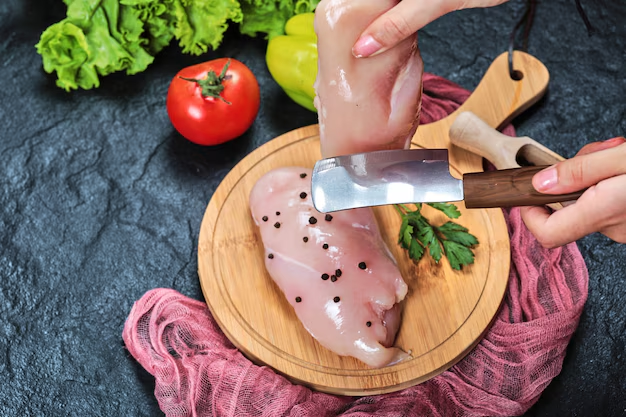How Long Can Thawed Chicken Safely Stay in the Refrigerator?
Whether you're planning a big family dinner or just weekly meal prepping, understanding how to store chicken properly is crucial. Dealing with thawed chicken can be confusing, particularly when it comes to how long it can sit in your fridge without spoiling. This article dives deep into the specifics of chicken storage, providing essential guidelines and practical tips to ensure your chicken remains safe to consume.
📜 Understanding the Basics of Thawing Chicken
The process of thawing or “unthawing” chicken (colloquially used interchangeably with thawing) brings up several questions around safety and food quality. Here’s a look at how to properly handle this process.
Why Proper Thawing Matters
Thawing chicken correctly is about more than just avoiding an unpleasant dinner. Improper thawing can affect texture and taste, leading to food that's dry, rubbery, or less palatable. Even more critically, it can pose significant health risks, potentially leading to foodborne illnesses if bacteria begin to grow.
Safe Thawing Methods
- Refrigerator Thawing: This is the safest method. Place chicken in its original packaging on a plate to catch drippings. It requires planning, as it can take a full day to thaw a package of chicken breasts.
- Cold Water Thawing: Submerge the chicken (in a leak-proof bag) in cold water, changing the water every 30 minutes. This is quicker but requires attention.
- Microwave Thawing: Quick and effective, but be ready to cook immediately, as this can start the cooking process.
⏳ How Long Can Thawed Chicken Stay in the Refrigerator?
Once you've thawed chicken in the refrigerator, you have a specific time window during which the meat should be cooked or frozen to maintain safety and quality.
General Guidelines
- Safe Duration: Typically, chicken thawed in the refrigerator is safe for an additional 1 to 2 days. This window allows you to plan meals flexibly.
- Texture and Flavor: Meat kept beyond this period may begin to deteriorate in texture and taste, even if it remains technically safe to consume.
Why Timing Is Critical
Keeping chicken for too long, even in cold temperatures, can risk spoilage. Although refrigeration slows bacterial growth, it does not stop it completely. Consuming chicken that has spoiled can lead to severe foodborne illnesses.
Signs of Spoiled Chicken
- Off Smell: A sulfur-like or ammonia odor often indicates spoilage.
- Color Changes: Chicken that has turned gray or green is a warning sign.
- Texture: Slimy or sticky chicken should be discarded.
🛑 Common Mistakes to Avoid
Avoiding foodborne illnesses isn't just about knowing how long chicken can last in the fridge. You also need to avoid common mishaps when dealing with thawed chicken.
Mistake #1: Refreezing Thawed Chicken
Chicken should not be refrozen after it has been thawed in the fridge unless it’s been cooked first. This can drastically affect the texture and moisture level.
Mistake #2: Improper Storage
Make sure thawed chicken is sealed in an airtight container or a well-wrapped package to avoid cross-contamination with other foods.
Mistake #3: Forgetting Expiry Dates
Always keep track of when chicken was initially stored. Label packages with a date to ensure nothing lingers too long.
👍 Practical Tips for Safe and Efficient Chicken Storage
To get the most out of your chicken storage practices, here are some practical tips:
- Plan Ahead: Thaw chicken in advance, ensuring it’s ready before meal prep begins.
- Maintain Refrigerator Temperature: Keep your fridge set below 40°F (4°C) to maximize preservation.
- Use Frozen Chicken: If plans change, remember it’s perfectly fine to cook chicken from frozen directly.
Here’s a quick visual guide to help manage your thawed chicken:
| Step | Details |
|---|---|
| Thawing Method | Use the fridge for safety over convenience methods |
| Storage Time (Thawed) | 1 to 2 days in the refrigerator |
| Check for Spoilage | Look for changes in smell, color, and texture |
| Avoid Refreezing | Only refreeze after cooking |
| Cooking From Frozen | It’s safe but adjust cooking time accordingly |
📌 Key Points to Remember
- Safe Practices: Always prioritize hygiene and food safety over convenience.
- Flexible Planning: Thaw only when ready to cook soon, or learn to cook from frozen as a backup plan.
- Monitor Your Fridge’s Environment: Temperature and cleanliness are integral to food safety.
Storing chicken correctly isn’t just a matter of keeping food fresh—it’s a key component of reducing waste and maintaining good health. By understanding and following these guidelines, you ensure that every meal prepared with chicken is both delicious and safe. With a little foresight and by paying attention to dates and signs of spoilage, you can easily keep your kitchen running smoothly and your meals reliably tasty. 🥘
In conclusion, while it might seem like a simple task, proper chicken thawing and storage require an informed approach to protect both taste and health. Whether for large batch cooking or intimate dinners, these methods ensure that you’re always ready for your next poultry-based recipe. So, the next time you pull a package of chicken from the freezer, remember these insights and enjoy your meals with peace of mind.
